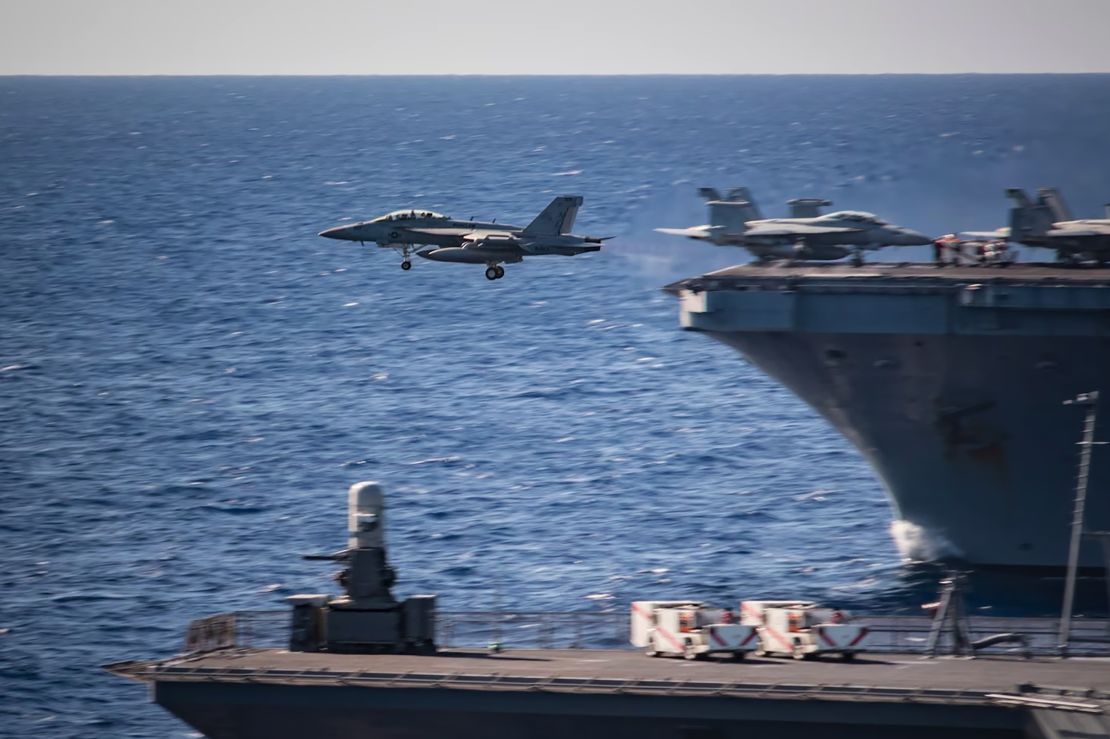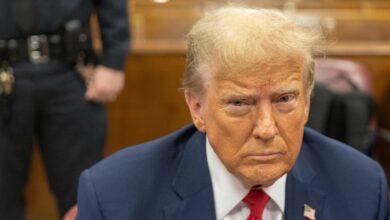
A dozen United States and Japanese warships, including two US aircraft carriers, have been putting on a show of military might this week in the Philippine Sea east of Taiwan.
Analysts say the joint exercises show the US Navy can respond to contingencies across a broad swath of Asian waters where tensions with China remain high – even while facing hostilities in the Middle East.
The US Navy aircraft carriers USS Carl Vinson and USS Theodore Roosevelt were joined by the Japan Maritime Self-Defense Force helicopter destroyer JS Ise, seven US guided-missile destroyers and two US cruisers for what the Navy calls a Multi-Large Deck Event (MLDE).
“The U.S. and Japan are uniquely capable of rapidly assembling multiple large-deck naval forces in support of mutual security interests in the Indo Pacific,” Rear Adm. Carlos Sardiello, commander of the Vinson-led Carrier Strike Group 1, said in a statement.

The dozen warships conducted “defense drills, sea surveillance, cross-deck exercises and tactical maneuvers to advance unique high-end warfighting capability,” the US Navy statement said.
The exercises began Monday and were scheduled to conclude Thursday, according to a statement from the Japanese military.
Collin Koh, research fellow at the S. Rajaratnam School of International Studies in Singapore, said while exercises occur regularly in the area, the timing of this show of force is important.
“There had been earlier trepidations that the Mideast flareups would draw a US strategic refocus away from the Western Pacific,” Koh said.
“This was seen as a demonstration of US commitment to its strategic focus on the region despite what happens in the Mideast,” he added, noting that a third US aircraft carrier in Asia-Pacific, the USS Ronald Reagan, is now in Japan.
Meanwhile, according to the USNI Fleet Tracker, only one US carrier – the USS Dwight D Eisenhower – is in the Middle East, where Houthi rebels have sustained a series of attacks on US naval assets and commercial shipping in the Red Sea, despite multiple US and British strikes on the group’s infrastructure inside Yemen.
Hawaii-based analyst Carl Schuster, a former director of operations at the US Pacific Command’s Joint Intelligence Center, said staging the joint exercises in the Philippine Sea shows the US Navy can get forces quickly to areas where China’s naval units have been active in recent months.
“As an exercise, it demonstrates the mobility of aircraft carriers. Geopolitically, it also highlights the carrier’s ability to support a range of contingencies across a broad area,” Schuster said.
Potential maritime flashpoints
That broad area reaches as far south as islands and reefs in the South China Sea, where Chinese and Philippine vessels have been in recent confrontations. It also extends west to the democratically ruled island of Taiwan, which is reporting bumps in Chinese naval and air activity in surrounding waters since an election in January.
And it stretches northwest to the East China Sea and the Japanese-controlled Senkaku Islands, called the Diaoyus by China, which Beijing claims as its sovereign territory and where it has put an almost-constant coast guard presence in the past year, according to Japan.
All those areas are potential military flashpoints between China and the US and its allies.
But Taiwan has been the major focus since elections on January 13, in which voters gave the island’s ruling Democratic Progressive Party a historic third consecutive presidential victory, shrugging off warnings from China that their reelection would increase the risk of conflict.
Beijing responded soon after the vote by saying, “Taiwan is part of China.”
China’s ruling Communist Party views Taiwan as part of its territory, despite having never controlled it, and Chinese leader Xi Jinping has not ruled out the use of force to bring the island under Beijing’s control.
The head of the US Indo-Pacific Command, Adm. John Aquilino, told a conference in Hawaii after the Taiwan election that he expects Beijing to show its displeasure at the result of the vote.
“The coercive pressure campaign against Taiwan continues, and we’re watching it in the wake of the elections,” Aquilino told the Pacific Forum.
“I’m not sure what they’re going to do, but I expect some demonstration of force against Taiwan in the near term.”
The US admiral also noted the importance of the exercises like the US-Japan joint maneuvers taking place this week.
“Laying down the ability to be able to move forces forward, to be able to sustain the force, to be able to train and operate with our allies and partners in their home territory provides an asymmetric advantage,” Aquilino said.




